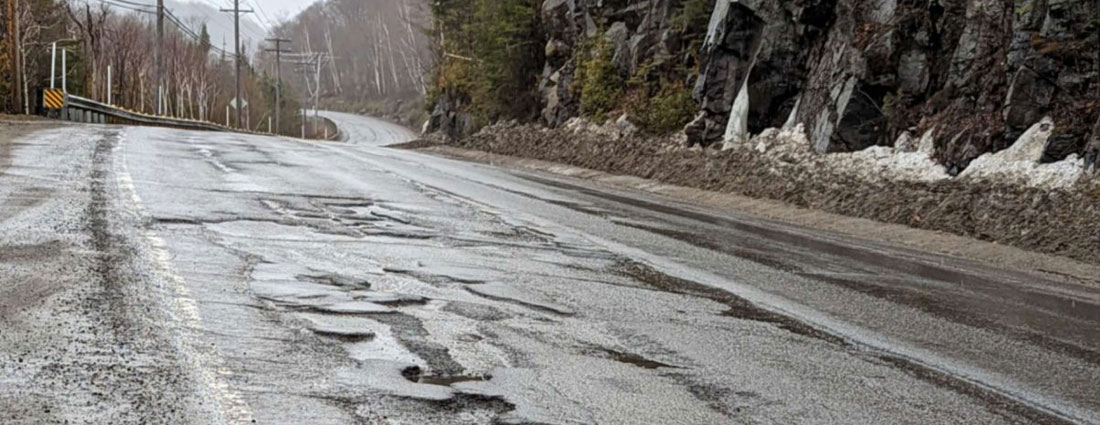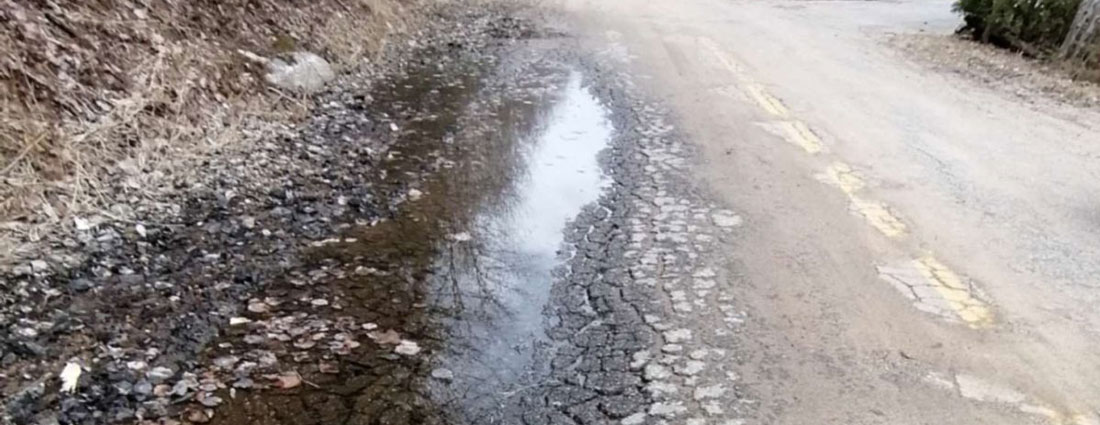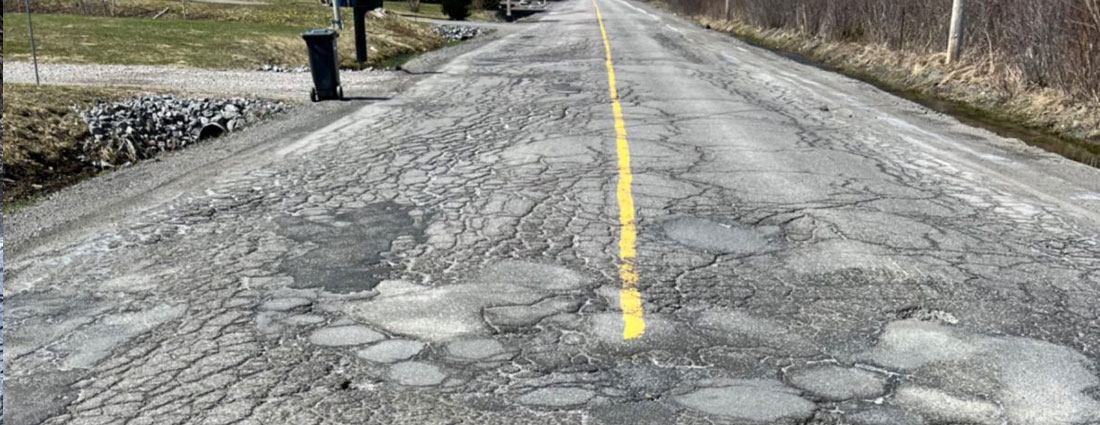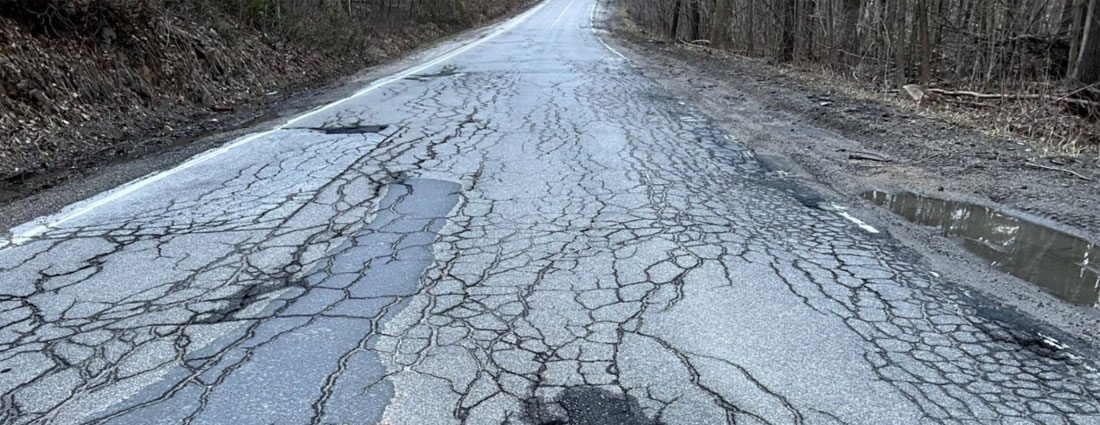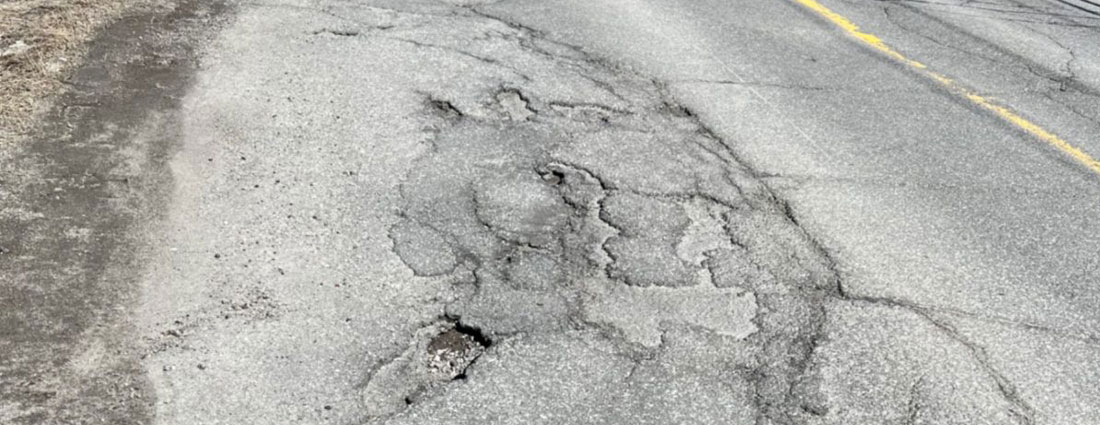Worst Roads

The investment report
The last campaign in pictures
The state of roads in Quebec: What the experts say
You’ve probably already wondered about the state of our roads in Quebec. Why do they seem to be in worse shape than the roads in the United States or other provinces? Why does it feel like all the money invested in maintaining them just isn’t enough?
CAA-Quebec talked to some experts to get answers to these questions.
Alan Carter is a professor and head of the Pavement and Bituminous Materials Laboratory at the École de technologie supérieure (ÉTS). Guy Doré is a full professor in the Faculty of Civil Engineering at Université Laval. They’ve got answers to all our questions!
The general condition of the roads
Bad roads
Causes of road deterioration
Pavement markings
Maintenance, repair and reconstruction
Investments and economic recovery
How much has been invested in the road network, and for what purpose?
In 2022–2023, a total of $759.4 million was invested to preserve the Quebec road network. This investment made it possible to carry out work on 1,478 km of pavement in 2022, including 897 km of repair work to correct pavement deficiencies, 314 km of palliative work to temporarily restore severely deteriorated pavements to good condition, and 267 km of preventive work to preserve pavements in good condition and thus extend their useful life.
Also in 2022–2023, to preserve structures of the major road network, investments amounted to more than $1,189.1 million for all of Quebec, plus $122.6 million for municipal bridges managed by Ministère des Transports et de la Mobilité durable (MTMD).
MTMD explains
1. According to Ministère des Transports et de la Mobilité durable du Québec (MTMD), the road network comprises more than 31,000 km, including 6,000 km of highways and 9,000 km of national roads. This network extends over a huge territory, for a limited population pool.
Particular attention is paid to high-volume roads with rutting phenomena (grooves worn into the pavement).
Quebec’s major road network consists of nearly 5,700 structures, whose average age is 41 years. From 2009 to 2022, the number of such structures in good condition increased from 61.8% to 77.6%.
MTMD would like to point out that producing a comparative analysis based on data from different bodies is problematic, since these bodies don’t use the same definitions.
2. On average, MTMD invests nearly $10 million each year in pothole repairs and uses nearly 15,000 tonnes of asphalt to patch pavements.
3. Unlike drivers in Southern Ontario, drivers in Quebec are allowed to use studded tires to reduce the risks of accidents in the winter conditions encountered in Quebec. This type of tire most likely contributes to the faster degradation of road surfaces. MTMD is currently carrying out a research project to determine the impact of studded tires on pavements.
4. Each year, MTMD refreshes approximately 85,000 km of road markings with water-based paint. For new asphalt or concrete pavements, MTMD uses epoxy resin products to mark around 4,000 km of lines. After October 15 and for palliative work in winter, less than 1,000 km of lines are painted with alkyd paint.
The glass microbeads added to marking products act as small mirrors that reflect the light from the headlights back to the driver’s eye, making the lines brighter. Since the beads are scraped off by snowplows, roads have to be repainted after the thaw.
Thanks to the technique of applying the marking product in an inlay (groove), it is protected from snow removal operations and vehicle traffic, thereby increasing its long-term durability. However, this technique is used only when the average annual daily traffic (AADT) is greater than 50,000 vehicles/day.
5. MTMD has developed a pavement preservation response planning strategy designed to maximize the long-term benefits of its investments. The challenge is to invest in the right road, at the right time, with the right technique through optimal response planning and to avoid the “worst first” reflex.
6. To determine which type of pavement (asphalt or concrete) represents the best long-term investment, MTMD relies on the ministerial guideline for choosing pavement types. The best long-term investment is based on economic, social, and environmental analyses. Certain criteria such as cost trends affecting the return on investment, traffic conditions, improved knowledge or expertise, or consideration of the effect of pavement types on the environment are therefore all taken into account in the final choice.
7. The recycling and reuse of road surfacing materials is a subject of great interest to MTMD. There is no doubt that recycling these materials has many environmental and financial benefits. However, in a context of sustainable development, this practice must not be at the expense of the quality and durability of new road surfaces. Provisions are already included in MTMD’s contract documents to allow the use of these materials in the manufacture of hot mix asphalt, in cold-in-place recycling and in-place asphalt recycling techniques, and as granular materials.
8. Over the 2024–2026 period , $1.5 billion will be invested in projects aimed at ensuring that roadways remain in good condition. MTMD is basing its response planning on modern principles of sound road asset management. It is based on five complementary components:
Immediately initiate work on pavements whose condition could compromise safety.
Carry out preventive work aimed at preserving pavements in good condition and extending their useful life through cost-effective interventions.
Carry out minor rehabilitation work with a high benefit-cost ratio, depending on the remaining life of pavements.
Carry out major rehabilitation work with a high benefit-cost ratio, depending on the remaining life of pavements.
Limit work that responds to other considerations and imponderables through interventions that do not fit into the other components.
Most of MTMD’s road infrastructure was built in the 1960s and 1970s. For many years, regardless of the administration in place, Quebec has experienced a deficit in investment and maintenance of its network.
